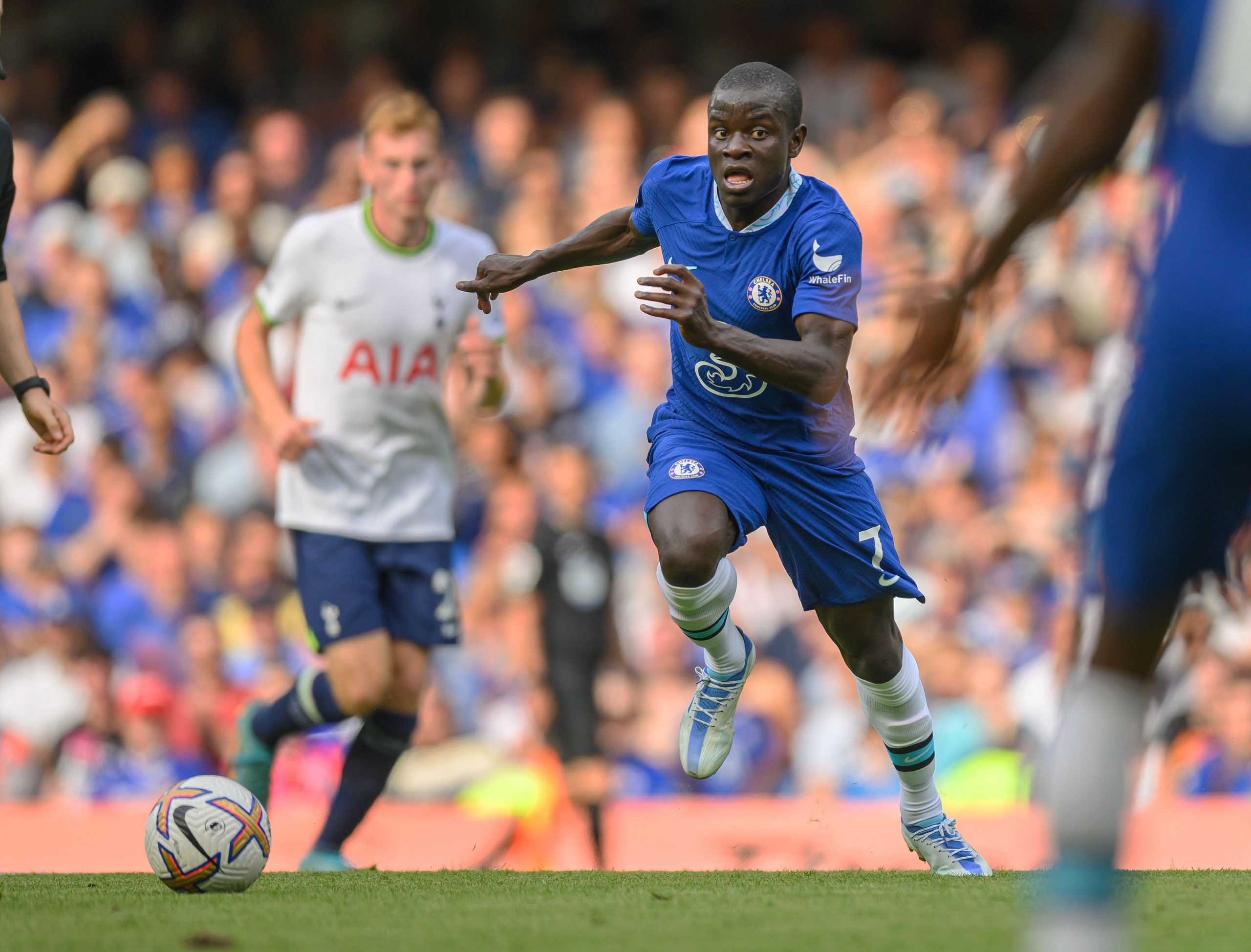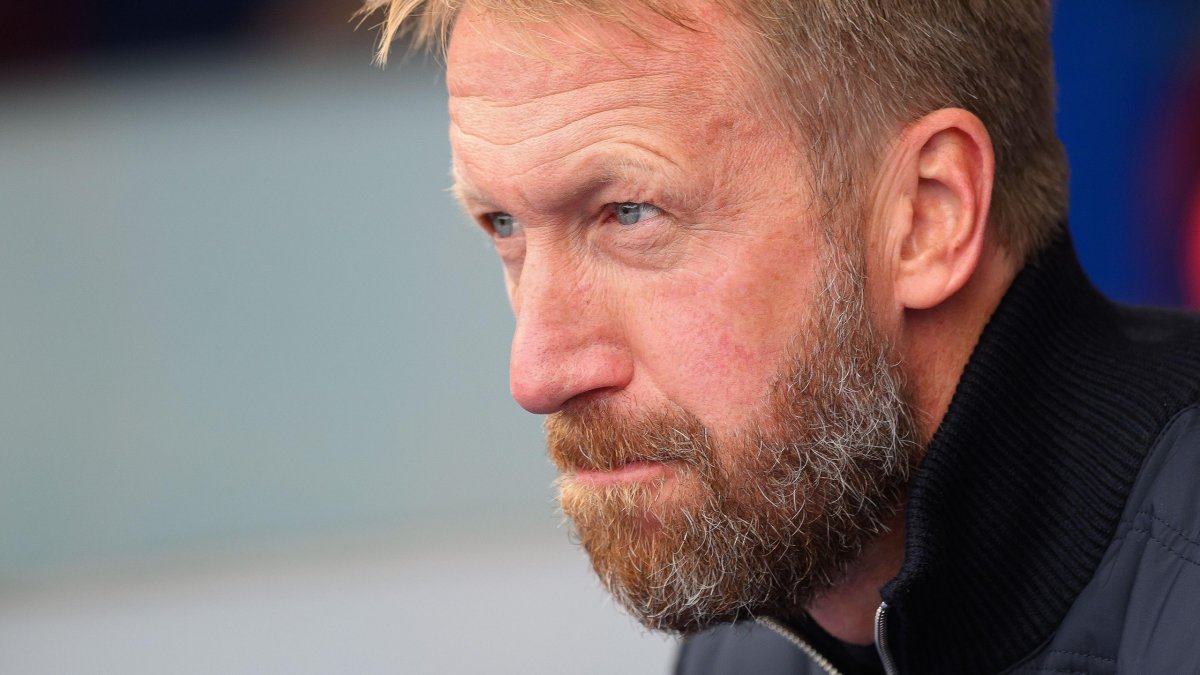It has been all of 12 weeks since Graham Potter was handed a four-year contract to replace Thomas Tuchel at Chelsea, enough time for Potter to ascertain that he had undertaken the “hardest job in football” as the club transitions from the Roman Abramovich era.
The day after Potter made that claim, Chelsea went on to suffer their first defeat to nearby rivals Fulham in 17 years. And victory over Crystal Palace last weekend was only Potter’s second in 10 matches, a run of poor results that has placed him under scrutiny heightened by the club’s transfer spending, which has now exceeded £400m ($490m) following the signing of Mykhaylo Mudryk.
What lies ahead for Chelsea are 21 league games to claw back the 10-point gap to Newcastle in fourth place and rescue any hope of playing in the Champions League next season.
Focussing on the Premier League, here are four areas that paint a picture of Chelsea’s underwhelming season thus far.
How badly is Chelsea missing a No. 9 in attack?
No Chelsea team of the Abramovich era scored as few as 22 goals after 19 games, but their struggles in front of goal stretch back to last season.
Romelu Lukaku’s second spell at the club has not gone to plan, as his eight goals failed to repay the £97.5m ($120m) club-record fee Chelsea paid Inter Milan in 2021.
Yet, after sending Lukaku back to the Serie A club on loan, Kai Havertz has been a clone of Lukaku in two key metrics. Lukaku finished last season with a shots-per-90 rate of 2.6 – fewer than Timo Werner (3.2) and Hakim Ziyech (3.5). His shots-on-target rate of 1.1 ranked 21st out of 83 forwards to have played at least 1,000 minutes.
Havertz, by the same two metrics, stands at 2.5, while he shares a shots-on-target per 90 rate of 1.1 to rank 16th out of 35 qualifying forwards (min. 500 minutes played).
In terms of which striker saw more of the ball, Havertz is a clear winner with a touches-per-90 of 82.0 compared to 49.2. He does trail Lukaku (18%) in percentage of possessions within the penalty area at 13%, with the Inter man ranked 6th out of 83 in contrast to 25th out of 35 for Havertz.
Does Chelsea’s defense fare well with the Premier League’s “Top 6”?
Not all teams in the top 6 have been immune to defensive lapses this season, but Chelsea has fared reasonably well considering the departures of Andreas Christensen and Antonio Rüdiger last summer and a reoccurrence of Reece James’ knee injury.
They rank second (46.3%) in percentage of challenges won behind Manchester City (47.4%), though the latter has played in one less game and registered 564 fewer challenges, leaders Arsenal rank lowest at 42.2%.
In Thiago Silva, Chelsea has a reliable center-back who ranks 5th out of 92 defenders in challenges won at 67.1% (min. 80 challenges), standing alone as the best performer in aerial duels (76.1%). Out of the other top 6 clubs, only Liverpool’s Virgil van Dijk outperforms Silva with his challenge win rate of 70.8%. The rest of the 26 top-six defenders average out at 52.3%, Silva’s Chelsea teammate Kalibou Koulibaly notably ranking fourth at 61.0%.
Using the same criteria, the decision by Graham Potter to drop Marc Cucurella (45.0%) recently appears to be justified, as the Spaniard ranks 25th out of 42 qualifying full-backs. Only Spurs’ Emerson Royal and Manchester United’s Tyrell Malacia have fared worse among top-six clubs, while Luke Shaw tops the ranks at 56.0%.
Potter has preferred to start academy product Lewis Hall in Chelsea’s last three matches after being handed his first Premier League start in November. Hall has bettered Cucurella’s season average of 4.6 challenges won per 90 at 5.7.

Is N'Golo Kanté’s absence with injury a factor in the team underperforming?
Yes. But the good news for Chelsea fans is Kanté returned to training this week as he works his way back to full fitness from a serious hamstring injury. Limited to fewer minutes (197) than youngster Carney Chukwuemeka (223), Chelsea has cycled between Ruben Loftus-Cheek, Mateo Kovačić and Conor Gallagher to partner Jorginho in Kanté’s absence.
The Frenchman ranked third among 50 qualifying midfielders last season with a 50-50s won-per-90 rate of 1.9. The trio mentioned above have all fallen short of that – Gallagher, 1.4 (ranks 24 of 69; Loftus-Cheek, 1.1 (49); Kovačić, 1.0 (53).
Kanté also ranked third for line-breaking passes per 90 last season out of 62 midfielders at 9.2; only teammate Jorginho (10.5) and Spurs’ Pierre-Emile Højbjerg (9.4) could top that.
Kovačić has blown those numbers out of the water this season, with his rate of 13.4 topping all midfielders (min. 500 minutes), far surpassing the average of 5.5. Jorginho’s number has regressed to 8.8, while Loftus-Cheek and Gallagher stand on 5.6 and 3.7.
What can be said of Chelsea's recruitment?
In our Top 5 Best Premier League players under 21 article earlier this week, we outlined why Chelsea defender Levi Colwill could be on the brink of a breakthrough season on loan at Brighton.
Colwill was spotted in the directors’ box with Mykhaylo Mudryk at the win over Crystal Palace and, at 19, would appear to be a long-term option to fill the boots of Thiago Silva.
A starter in Brighton’s last five games, Colwill has marginally bettered captain Lewis Dunk’s challenge win rate, 61.4% to 59.4%, and displayed an appetite for a pass against Liverpool last weekend by completing 16-of-19 line-breaking passes – which ranked 2nd among both sets of players.
What may muddy the water is the arrival of Benoît Badiashile at Stamford Bridge as a defender who is a left-sided center-back, the same profile as Colwill. The £32.7m ($40.4m) signing from Monaco looked sharp on his debut against Palace, completing 96% of his passes and ending the match with a challenge win rate of 65%.


 © 2025 PFF - all rights reserved.
© 2025 PFF - all rights reserved.